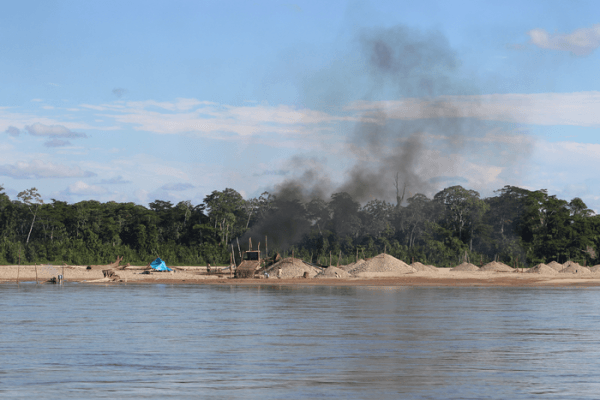If you had to guess which part of the world has the highest levels of atmospheric mercury pollution, you probably wouldn’t pick a patch of pristine Amazonian rainforest. Yet, that’s exactly where they are.
In a new study appearing Jan. 26 in the journal Nature Communications, an international team of researchers show that illegal gold mining in the Peruvian Amazon is causing exceptionally high levels of atmospheric mercury pollution in the nearby Los Amigos Biological Station.
One stand of old-growth pristine forest was found to harbor the highest levels of mercury ever recorded, rivaling industrial areas where mercury is mined. Birds from this area have up to twelve times more mercury in their systems than birds from less polluted areas.
The impact and spread of mercury pollution have primarily been studied in aquatic systems. In this study, a team of researchers led by Jacqueline Gerson, who completed this research as part of her Ph.D. at Duke, and Emily Bernhardt, professor of Biology, provide the first measurements of terrestrial deposits of atmospheric methylmercury, the most toxic form of mercury.
Illegal miners separate gold particles from river sediments using mercury, which binds to gold, forming pellets large enough to be caught in a sieve. Atmospheric mercury is released when these pellets are burned in open fire ovens. The high temperature separates the gold, which melts, from the mercury, which goes up in smoke. This mercury smoke ends up being washed into the soil by rainfall, deposited onto the surface of leaves, or absorbed directly into the leaves’ tissues.
Read more at: Duke University
Artisinal gold miners in the Peruvian Amazon use open pit fires to extract gold, sending methylmercury into the atmosphere. New data shows how that mercury is absorbed by nearby ecosystems. (Photo Credit: Melissa Marchese)


